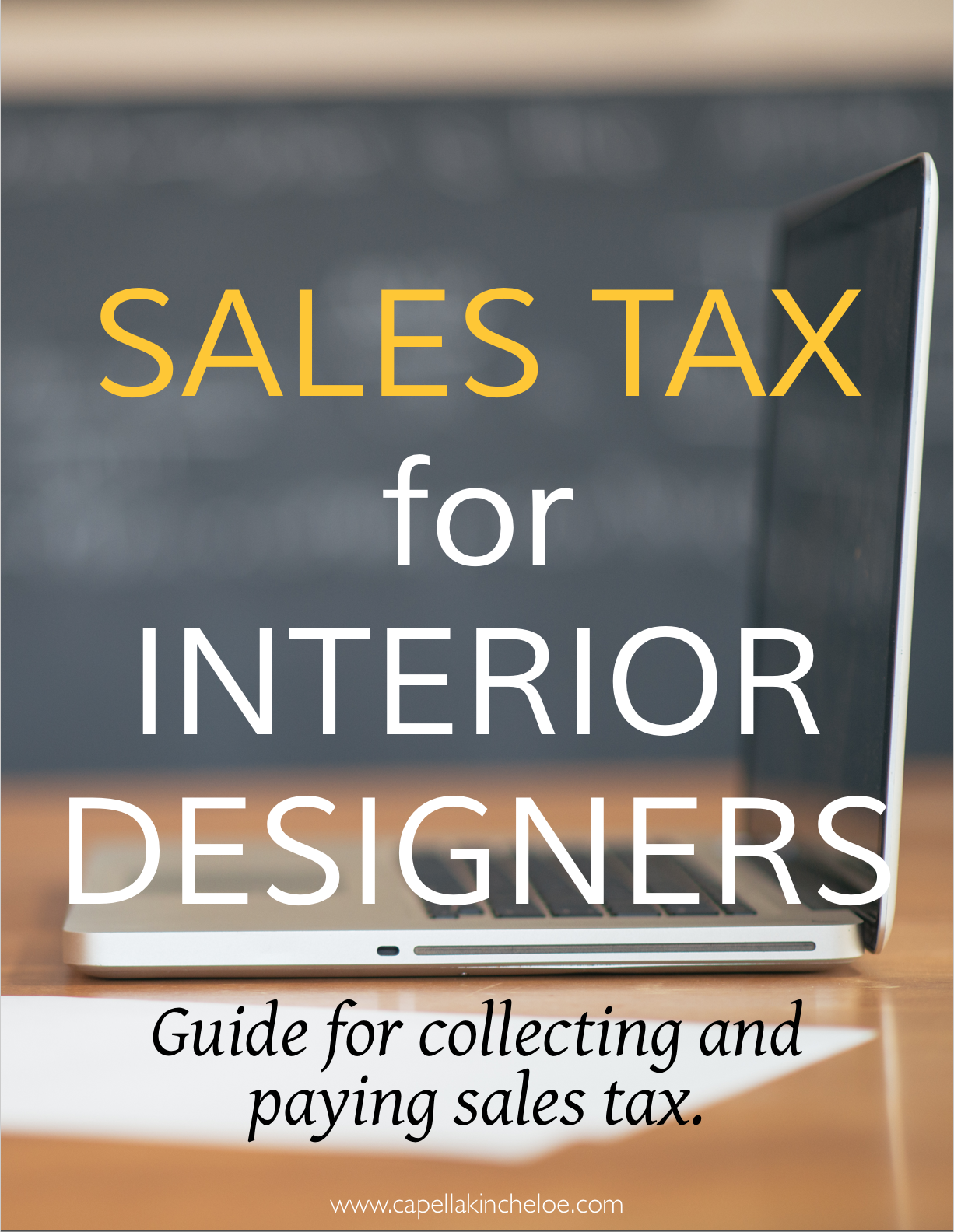Sales Tax Basics for Interior Designers
Sales Tax
The first thing to know about sales tax is that if you're selling product (and sometimes services) to clients you'll have to pay it and the second thing to know is that every jurisdiction has different rules and regulations. In other words, it is unavoidable and it is complicated.
Tax is required to be paid on goods sold, but some businesses can get exemptions to pass on this tax to the end consumer - the client. The designer purchases a taxable item with the purpose of resale and at the time the designer charges the client they also must collect sales tax. The purpose of resale is the exemption. The sales tax is passed on to the client.
Your Sales Tax Registration
The first thing is to determine your sales tax obligation. For your business location(s) start with your state - usually the Department of Revenue (google: state + sales tax license/ business license). You may need to register your business and then apply/fill out a form for a resale license. Repeat the same process for your county/city after you have the state squared away. There are thousands of taxing jurisdictions with different regulations in the US, so keep that in mind while reading this article. I wish I could make it easier on you and tell you exactly what to do and exactly what is taxable or not, but...thousands.
Once you know what jurisdiction(s) you will be paying sales tax to, you will know the rates and can start adding the rates to your invoices. I have this part set up in Studio Designer so it will calculate automatically. But you'll still need to know the basics of what is taxable or not.
Collecting & Reporting Sales Tax
One of the main things when determining what is taxable or not is that if line items (delivery, installation, product) are lumped together into a single price, your client may have to pay sales tax on the lump sum. If the line items remain separate on the invoice, not all items may be taxable.
Example: Sofa $4000 + Delivery $150 + Markup $1000. If your jurisdiction only taxes product and not markup or delivery, the client will only have to pay sales tax on $4000. However, maybe your tax jurisdiction charges tax on Markup, but not Design Fees - you may want to change your contract/invoice wording to save clients a little money.
Another thing to keep in mind sometimes line items that are related to a specific product are taxable, but when they're not related to that product they're not. Look at the example above again. Design Fees (delivery/installation) may be taxable because it is directly tied to the sofa, so the tax liability would be on $5000. However, if you had Design Fees that were incurred from the design planning phase they may not be taxable.
It is important to know these rules because you can save your clients money, just by the way that you invoice them.
With multiple business locations, your tax may be different for each location. When your projects are located in-state you are required to collect sales tax in your state. If you have projects outside of your state, some states and cities require that you pay sales tax to them if you are doing a project in their jurisdiction, the waters get muddy here, so ask a professional if you think this may apply to you.
Here are some more examples:
Sofa net is $1000, your markup is $1000, shipping is $1000, you could say that this sofa is $3000 on the client invoice and then it would all be taxed. $3000 sofa + 8% tax (4% to state 4% to city) is $240 in taxes, so you would charge your client $3240 for that sofa and make sure you give the state their 4% = $120 and the city their 4% = $120.
Now, you may have all the same numbers: Sofa net is $1000, your markup is $1000, shipping is $1000, but if you put these on separate line items (not in a lump sum), then markup and/or shipping may not be taxed. $1000 sofa + 8% tax ($80) + $1000 shipping + $1000 markup, so the invoice total would be $3080 and you'd give the state their 4% = $40 and the city their 4% = $40.
Disclaimer: This is for informational purposes only, and is not a substitute for professional advice, nor does the use of this website constitute a professional-client relationship. All content is provided “as is” with no guarantee regarding accuracy, suitability, or timeliness. Your reliance on any content accessed on this website is strictly at your own risk.
Want to help out your fellow designers? Share this article. #collaborationovercompetition

